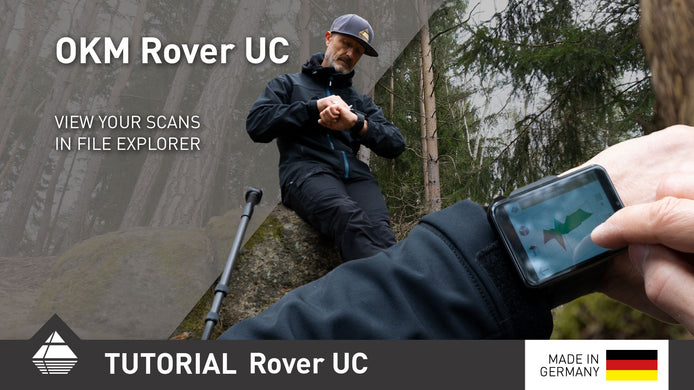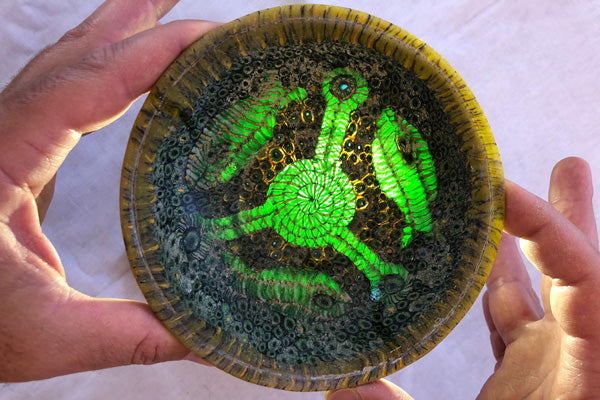Rover UC ile Hazine Avcılığı için Tarama Kılavuzu
#1 Yardımcı hatlar kullanın
Özellikle yeni başlayanlar için, ölçüm alanını önceden zemindeki yardımcı çizgiler gibi küçük işaretlerle sınırlamak çok yararlı olabilir. Bu, ölçüm yollarının her zaman aynı uzunlukta olmasını garanti eder. Düz çizgiler gibi ek işaretler, define avcısının ölçüm alanında paralel yollarda yürümesine ve izlerin aynı mesafelere sahip olmasını sağlamasına yardımcı olur. Bu şekilde ölçüm verileri bozulmaz ve daha sonra kullanıcı tarafından düzgün bir şekilde analiz edilebilir.
#2 Ölçüm alanının boyutunu ayarlayın
Deneyimli define avcıları genellikle ölçüm alanlarını oldukça iyi tahmin edebilirler. Kullanıcı ölçümden sonra taranan alanın önceden tahmin edilenden daha küçük veya daha büyük olduğunu fark ederse, ölçüm alanının boyutu daha sonra uygulama aracılığıyla kolayca ayarlanabilir. Ölçüm verileri otomatik olarak yeni bilgilere uyarlanır.
#3 En iyi ölçüm sonuçları için taramanızı tamamlayın
Başarılı hazine avlarının ve tespit edilen nesnelerin sevinci elbette büyüktür ve özellikle göze çarpan nesneler ve anomaliler tespit edilir edilmez çok büyük olabilir. Bununla birlikte, doğru tarama sonuçları için ölçümün tamamlanması gerekir. Yer tarayıcısı ile yapılan ölçüm buluntu yerinde kesintiye uğrarsa, tespit edilen yapının boyutu ve ayrıntıları belirsiz kalır - belki de bir tünel veya silah gibi uzun bir eserdir? Nesnenin boyutunu kesin olarak belirlemek için tüm ölçüm alanının taranması gerekir.
#4 3D Yer Taramaları nasıl analiz edilir
Rover UC gibi 3D zemin tarayıcıları, ölçüm verilerinin doğrudan akıllı telefon üzerinde hızlı ve verimli bir şekilde analiz edilmesini sağlar: Tek bir parmak dokunuşuyla dokunmatik ekrandaki 3D grafikler döndürülebilir ve büyütülebilir. Uygulama, tespit edilen nesnelerin boyutunu, konumunu ve derinliğini daha doğru bir şekilde belirlemeye olanak tanır. Daha ayrıntılı sonuçlar için kullanıcılar tarama verilerini bilgisayara aktarabilir ve daha fazla analiz için Visualizer 3D yazılımını kullanabilir.
#5 Metaller nasıl ayırt edilir
Tespit edilen nesnelerin demir mi yoksa değerli metaller mi olduğu daha ileri fonksiyonlarla netleştirilebilir: Rover UC, kazı sırasında daha önce tespit edilen nesneleri geri almak için pinpointer olarak da kullanılabilir. Manyetometre modu özellikle demir, kobalt ve nikel gibi ferromanyetik metallerin lokalizasyonu için kullanılır. Bu işlev sayesinde demir çivi ve vida gibi nesneler değerli eserlerden ayırt edilebilmektedir.
Metal dedektörlerinin özellikleri ve işlevleri hakkında daha fazla bilgi edinin, örneğin metal ayrımı hakkında sorularınızı sorun ve bireysel dedektör eğitiminizde ipuçları ve püf noktaları alın.


